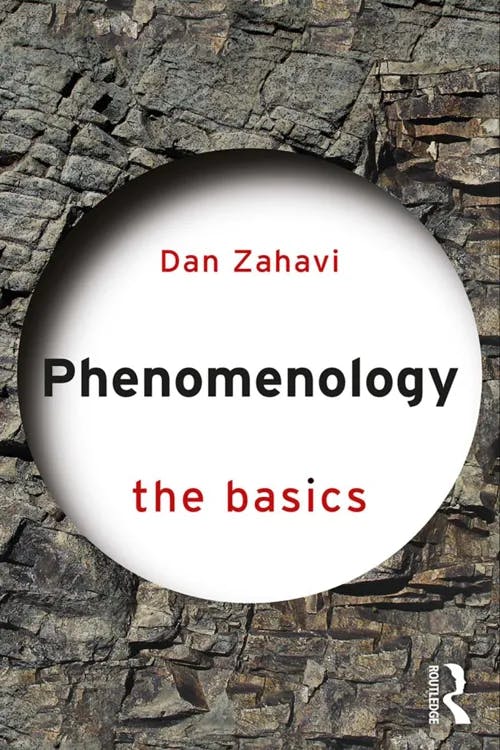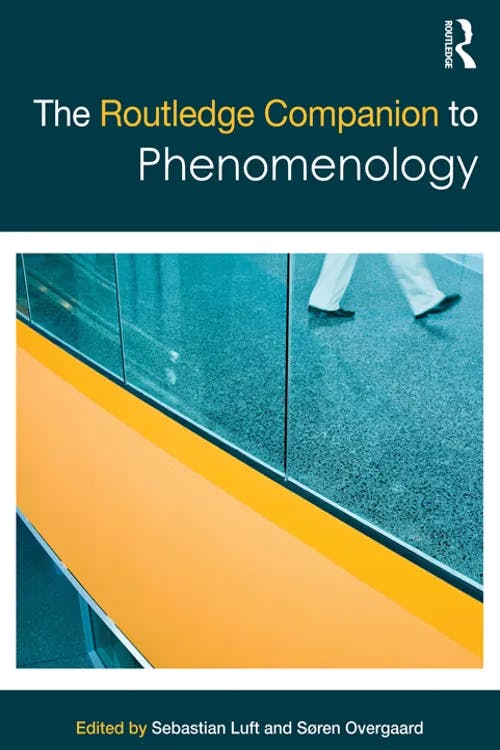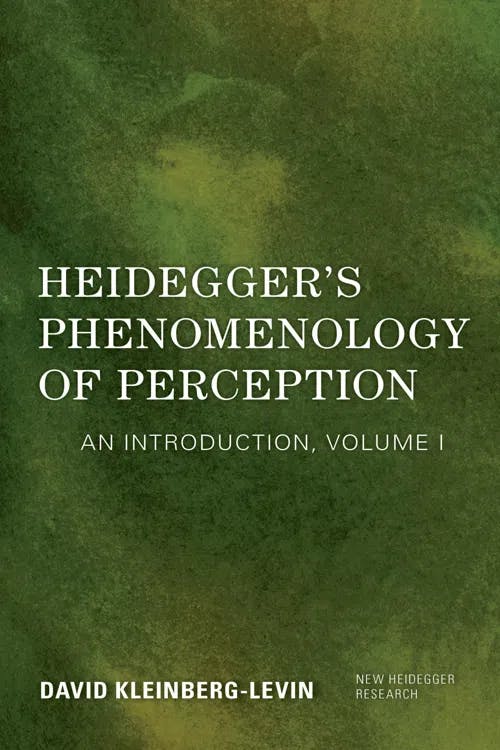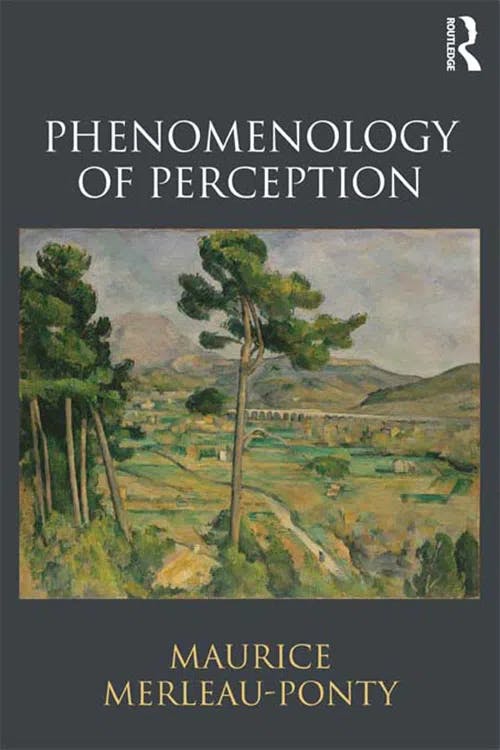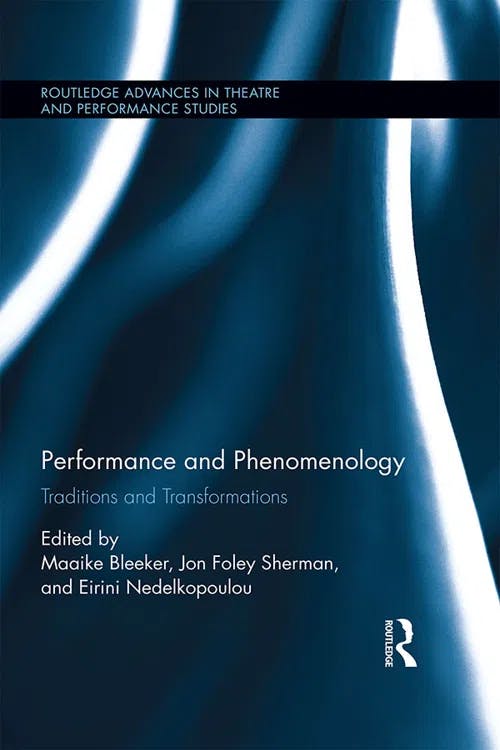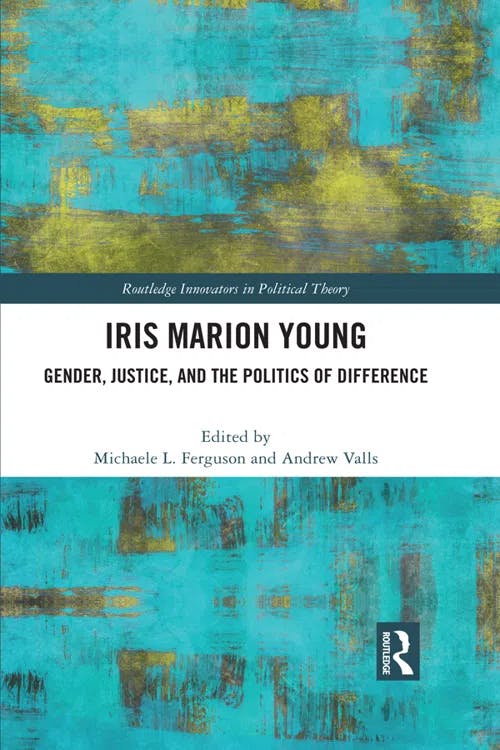What is Phenomenology?
MSt, Women's, Gender & Sexuality Studies (University of Oxford)
Date Published: 05.04.2023,
Last Updated: 21.12.2023
Share this article
Phenomenology's meaning
Phenomenology is the philosophical study of experience. It is a significant movement in twentieth-century philosophy and continues to be explored today. Broadly, phenomenology aims to understand existence through the way we experience the world. Phenomenologists blur the boundary between the perceiving mind/body/subject and the perceptible world/object, seeking to understand how each informs the other.
Phenomenology literally means the study of phenomena. A phenomenon is anything experienced, and any object of thought. As Dan Zahavi writes in Phenomenology: The Basics (2018), phenomenology is “interested in the how rather than in the what of objects.” Zahavi explains,
Rather than focusing on, say, the weight, rarity, or chemical composition of the object, phenomenology is concerned with the way in which the object shows or displays itself, i.e., in how it appears. [...] From this or that perspective, in strong or faint illumination, as perceived, imagined, wished for, feared, anticipated, or recollected. Briefly stated, phenomenology can be seen as a philosophical analysis of these different types of givenness. (2018)
Dan Zahavi
Rather than focusing on, say, the weight, rarity, or chemical composition of the object, phenomenology is concerned with the way in which the object shows or displays itself, i.e., in how it appears. [...] From this or that perspective, in strong or faint illumination, as perceived, imagined, wished for, feared, anticipated, or recollected. Briefly stated, phenomenology can be seen as a philosophical analysis of these different types of givenness. (2018)
Although the ideas underlying phenomenology can be said to originate in the seventeenth century (and can be traced back further into medieval and ancient philosophy), phenomenology emerged as a philosophical movement in its own right at the end of the nineteenth century. As Aurélien Djian and Claudio Majolino explain, phenomenology had “the ambition to renew philosophy as a whole and modify the very way in which philosophy deals with its most fundamental questions” (“Phenomenon,” in The Routledge Handbook of Phenomenology and Phenomenological Philosophy, 2020).
German philosopher Edmund Husserl (1859–1938) is credited as the founder of phenomenology, although he was influenced by his teacher Franz Brentano (1838–1917). Husserl aimed to create a philosophy grounded in the “lifeworld,” or the world we live in and experience in daily life. According to Zahavi, Husserl and phenomenologists following him believed that the lifeworld had been “forgotten and repressed” by science: “In its search for objective knowledge, science has made a virtue of its ability to move beyond and surpass bodily, sensuous, and pragmatic experience, but has frequently overlooked to what extent it is enabled by those very same experiences” (Zahavi, 2018). Husserl called for a return to the “things themselves.”
While Husserl certainly launched phenomenology and his ideas echo throughout the movement, many later phenomenologists have responded to, (mis)interpreted, and rejected his theories to approach phenomenology in their own ways. The French philosopher Paul Ricœur went so far as to suggest that “phenomenology in the broad sense is the sum of Husserl’s work plus the heresies stemming from Husserl” (quoted by De Santis, Hopkins, and Majolino in The Routledge Handbook of Phenomenology and Phenomenological Philosophy, 2020).
As Sebastian Luft and Søren Overgaard write in their introduction to The Routledge Companion to Phenomenology (2013),
Phenomenology is not, and never was, a philosophical school, if one understands by that a group of philosophers committed to identical, or very similar, sets of doctrines. Yet the importance phenomenology assumes today would be inconceivable if phenomenologists did not share certain methodological commitments as well as closely related ideas about the proper domain of phenomenological research.
Sebastian Luft and Soren Overgaard
Phenomenology is not, and never was, a philosophical school, if one understands by that a group of philosophers committed to identical, or very similar, sets of doctrines. Yet the importance phenomenology assumes today would be inconceivable if phenomenologists did not share certain methodological commitments as well as closely related ideas about the proper domain of phenomenological research.
A major philosophical idea which phenomenology diverges from is the clear separation between inner mind and outer world, between observing subjects and observed objects. In Cartesian philosophy, named after René Descartes (1596–1650), the outer, “true” reality is separate and distinct from the inner, experienced reality. Phenomenology takes issue with this simple divide, viewing consciousness and reality in a reciprocal relationship with each other; one cannot truly be separated from the other. This new perspective marked an important shift in philosophy: rather than seeking “objective” truth beyond specific perspectives or experiences, phenomenology proposed that truth could be discovered through an analysis of subjective experience.
In this guide, we introduce the basic elements of phenomenology, prominent figures in the field, and phenomenology’s continued influence on scholarship across disciplines.
Essential elements of phenomenology: a thought experiment
Luft and Overgaard (2013) list three major paradigms ascribed to by most phenomenologists:
- The First-Person Perspective
- Description
- Intentionality
To illustrate these essential elements, let’s consider this thought experiment, largely adapted from Zahavi (2018).
I’m in a shop, looking for a birthday present for a friend, and I notice an alarm clock. How does an alarm clock appear? Many factors affect this answer — the lighting, the position of the clock on the table, my distance from it. Regardless, as Zahavi writes,
I will never be able to see the entire alarm clock, since it will always appear perspectivally. If I look at the alarm clock as it is positioned on the desk in the shop, I might be able to see its top, and two of its sides, but I cannot see its backside or bottom or inside. (2018)
Dan Zahavi
I will never be able to see the entire alarm clock, since it will always appear perspectivally. If I look at the alarm clock as it is positioned on the desk in the shop, I might be able to see its top, and two of its sides, but I cannot see its backside or bottom or inside. (2018)
If I move around the table or lift it from the desk, I might be able to inspect different parts of the clock, but other parts will disappear. Yet, I never doubt that the whole clock is there, that there is more to the object than what I perceive from a given perspective. Some parts and properties are perceptually absent, but they still play a role in how I perceive the clock.
Zahavi emphasizes that “what we see is never given in isolation, but is surrounded by and situated in a horizon that affects the meaning of what we see” (2018). This context not only encompasses the perceptually absent aspects of the clock but also extends to the background surrounding the object. The clock is located in a particular setting, and whether this is “a salesroom, a study, or a lawyer’s office, the alarm clock will appear in different ways, with different meanings” (Zahavi, 2018). The clock may be surrounded by other objects which can influence my perception of it.
Zahavi also notes, “When highlighting the importance of context and horizon, we shouldn’t merely think of this in spatial terms, but also in temporal terms” (2018). The present is informed by the remembered past and the expected future. This includes my immediate past with this object, the information I retain from my exploration of the clock (which allows me to remember each side, even if I turn it around), and the past more broadly: I may have decided to look at the clock because I remember my friend saying that he needed a new one. Looking at the clock, I might try to anticipate my friend’s reaction to seeing it. Zahavi concludes this example with a final point:
When the alarm clock appears, it appears to me, but it does not appear to me as my private object. Rather, it is very much given to me as a public object, as one that others can also observe and utilize. [...] Even if the alarm clock only presents part of itself to me, others can simultaneously perceive aspects of it that are currently unavailable to me. (2018)
Throughout the above example, we can see the attention to experience and perception that lies at the foundation of phenomenology. This investigation of the alarm clock illustrates three essential elements of phenomenology.
The First-Person Perspective
Phenomenologists examine the world from a first-person perspective. It is the nature of visual perception that I can only see the alarm clock from one view at a time; I can only describe the object as it reveals itself to me, not in its ideal form. Phenomenology does not claim to achieve a universal or “objective” third-person perspective. Rather, phenomenology emphasizes that “there is just as much ‘objectivity’ and truth in the subjective access to the world once it is articulated and intersubjectively confirmed” (Luft and Overgaard, 2013). Phenomenologists generally posit that “once subjects put themselves in the position of describing the manner in which things are given or appear to them, they will quickly discover that these descriptions are valid not only for their own private selves, but for others too” (Luft and Overgaard, 2013).
Many phenomenologists, especially after Husserl, view this first-person perspective as inherently embodied. In order to observe the clock, I must be in spatial relation to it, and I engage my body as I explore it (I tilt my head, lean down, etc.). There is “no purely intellectual point of view” because there is “no view from nowhere, there is only an embodied point of view” (Zahavi, 2018).
Description
Speaking from the first-person perspective, the phenomenologist aims to describe experience. This task, however, is not as simple as it seems. While acknowledging the subjectivity of a first-person perspective, phenomenology (ideally and traditionally) attempts to proceed without biases and presuppositions. Husserl calls this “bracketing,” putting aside any commitment to values, ideologies, or theoretical assumptions; the process of bracketing is called the epoché. Ideally, a phenomenologist brackets anything that might have a distorting effect on the description of experience. Philosophers debate precisely what Husserl encouraged phenomenologists to “bracket” — previous biases and traditional theories; our habitual way of encountering the world; and/or our assumption that the world exists independently of us, able to be examined from a perspective not immersed within it (Zahavi, 2018).
Describing the full appearance of a phenomenon includes attending to its background. Context affects the object — the alarm clock appears differently if it is on a store table versus a nightstand — and phenomenologists account for these specificities, describing how an object appears, for what purpose, and with what meaning.
Intentionality
While first-person perspective and description are elements of phenomenology’s method, intentionality speaks to philosophical beliefs, and Luft and Overgaard suggest it is the only paradigm agreed upon by the whole phenomenological movement. Phenomenologists propose that to be conscious means to be conscious of something: I see (the alarm clock), I hear (the store clerk), I remember (my breakfast from that morning), I expect (my friend’s birthday party tomorrow). This idea that consciousness is always directed toward something is intentionality, a term introduced by Brentano but made key to phenomenology by Husserl. Intentionality captures the connection between “internal” representations of objects within one’s consciousness and “external” objects. Luft and Overgaard argue that “whereas one will rarely find ‘intentionality’ featured as a prominent term in phenomenological works after Husserl (at least the ‘classical’ ones), it is nevertheless the case that what is essentially meant by it — the correlation between first-person experience and its content — lives on under different guises” (2013).
Notable contributors and works: Husserl, Heidegger, and Merleau-Ponty
Edmund Husserl (1859–1938)
Although some would point to Franz Brentano’s Psychology from an Empirical Standpoint (1874, [2014]) as the origin of phenomenology, Edmund Husserl is largely considered phenomenology’s founder. His Logical Investigations, Volume One (1900, [2012]) and Volume Two (1901, [2013]) is a groundbreaking work in which he introduces phenomenology as a descriptive science. Theorizing the idea of intentionality, Husserl argues that consciousness consists of mental acts (i.e. seeing, remembering, hating, desiring). These mental acts could be linguistic (thinking or talking about an object), pictorial (viewing a representation of the object), or perceptual (encountering the object directly). According to Husserl, it is only through perceptual acts that the object is given to us directly. Logical Investigations inspired a strand of early phenomenologists to return to lived reality, rejecting a philosophical emphasis on ideals and understanding the world as such, separated from human consciousness. Consciousness, intentionality posited, was always in relation to the world around it.
When Husserl published his next work, Ideas (1913, [2012]), he created something of a divide in the burgeoning phenomenological movement. Labeling phenomenology a “transcendental philosophy,” Husserl seemed, to some scholars, to abandon his emphasis on realism in pursuit of ideal forms. In Ideas, Husserl writes of the aims of “pure phenomenology”:
[T]hat genuine philosophy, the idea of which is to realize the idea of Absolute Knowledge, has its roots in pure phenomenology, and this in so earnest a sense that the systematically rigorous grounding and development of this first of all philosophies remains the perpetual precondition of all metaphysics and other philosophy “which would aspire to be a science". (1913, [2012])
Edmund Husserl
[T]hat genuine philosophy, the idea of which is to realize the idea of Absolute Knowledge, has its roots in pure phenomenology, and this in so earnest a sense that the systematically rigorous grounding and development of this first of all philosophies remains the perpetual precondition of all metaphysics and other philosophy “which would aspire to be a science". (1913, [2012])
Kevin Hermberg explains that, by Absolute Knowledge, Husserl did not mean the absolute truth but rather “knowledge of what is absolutely given,” knowledge he “sought to accept as true only that for which he had appropriate evidence” (Husserl’s Phenomenology, 2006). Truth comes not from knowledge itself but from the experience of obtaining that knowledge; consciousness, for phenomenology, is no longer about what we know, but rather how we have come to know it.
Martin Heidegger (1889–1976)
Husserl’s student Martin Heidegger made significant contributions to phenomenology. Beginning with Being and Time (1927), Heidegger introduced existential and hermeneutical elements to phenomenology, focusing on defining existence and consciousness in terms of experience. Heidegger introduced the term Dasein, which combines the German “da” (there) and “sein” (being) to literally mean “there-being,” sometimes translated as “being-in-the-world.” Heidegger used Dasein to emphasize how humans are situated within the world, with consciousness developing from the context in which it arrives. Heidegger went further than Husserl in highlighting how we can never approach an object without its context, nor should we aim to.
As David Kleinberg-Levin explains in Heidegger’s Phenomenology of Perception (2019), Heidegger breaks from traditional metaphysics in his belief that “we are responsible for whatever ultimate meaning our lives and our world might have,” a responsibility that can also always be “ignored, neglected, refused, denied, or remain simply without awareness.” Kleinberg-Levin continues,
Another difference from the conception of essence in metaphysics is that the human essence, Da-sein, is not encapsulated or isolated; nor is it immutable and eternal; it exists in interaction with the world. (2019)
David Kleinberg-Levin
Another difference from the conception of essence in metaphysics is that the human essence, Da-sein, is not encapsulated or isolated; nor is it immutable and eternal; it exists in interaction with the world. (2019)
Heidegger’s theories resulted in the creation of a new branch of phenomenology. While all phenomenologists remained committed to describing the “things themselves,” they did so in service of different goals. Earlier phenomenologists had separated into the realist branch (committed to investigating the essential features of the world as experienced) and the transcendental branch (following Husserl’s later writings and aiming for a “pure phenomenology” understood through transcendental consciousness). For Heidegger, in order for phenomenology to address the question of being, it must orient itself toward the Dasein’s understanding of being, the experience of being in the world, not a transcendental or idealized understanding of existence. Arguably, “efforts in phenomenology after the phenomenological movement’s dispersion can be said to be situated somewhere between these three — realistic-empiricist, transcendental-idealistic, and existential-hermeneutic — alternatives” (Luft and Overgaard, 2013).
(See our study guide on existentialism for Heidegger’s contributions to this related philosophical movement.)
Maurice Merleau-Ponty (1908–1961)
Phenomenology began in Germany, but it was later developed by many prominent French philosophers including Maurice Merleau-Ponty, the third major figure in the development of phenomenology. Merleau-Ponty is best known for his Phenomenology of Perception (1945, [2013]), which emphasized the embodied nature of perception and significantly influenced developments in phenomenology since it was published.
Merleau-Ponty reiterates the importance of context in phenomenology with the idea of the gestalt, the figure perceived along with its background (a whole that is greater than the sum of its parts). The figure and its context can never be separated: “The perceptual ‘something’ is always in the middle of some other thing, it always belongs to a ‘field’ ” (Meleau-Ponty, 1945, [2013]). Scientists and philosophers often disregard the contextual aspects of the perceived world in pursuit of a decontextualized, “objective” account of things; the full field of perception obscures itself as we focus on one object. Merleau Ponty argues,
The fundamental philosophical act would thus be to return to the lived world beneath the objective world [...]; it would be to give back to the thing its concrete physiognomy, to the organisms their proper manner of dealing with the world, and to subjectivity its historical inherence; it would be to rediscover phenomena [...] it would be to awaken perception. (1945, [2013])
Maurice Merleau-Ponty
The fundamental philosophical act would thus be to return to the lived world beneath the objective world [...]; it would be to give back to the thing its concrete physiognomy, to the organisms their proper manner of dealing with the world, and to subjectivity its historical inherence; it would be to rediscover phenomena [...] it would be to awaken perception. (1945, [2013])
For Merleau-Ponty, consciousness is always embodied. He proposes the idea of the “body schema” to describe our sense of our body as a cohesive unit and our understanding of how that body relates to its environment (for example, whether it can fit through a doorway). The body schema extends beyond the physical limits of our body to objects around us. Merleau-Ponty argues that, while objects have a “positional spatiality,” the body has “situational spatiality”: it positions itself toward actual or possible tasks. When we, for example, pick up a musical instrument, the object becomes an extension of our body through what we can accomplish with it. Merleau-Ponty writes,
my body is polarized by its tasks, insofar as it exists toward them, insofar as it coils up upon itself in order to reach its goal, and the “body schema” is, in the end, a manner of expressing that my body is in and toward the world. (1945, [2013])
The body is oriented toward the tasks it performs and the tasks it can perform based on what it has done before. As Djian and Majolino explain,
The body schema mediates in this regard constantly between the currently performing body, which behaves and projects itself toward the world, and the habitual body, which determines the practical possibilities of this very body through already acquired skills and know-how. In this sense, the body is more than a ‘zero-point of orientation’; it creates a field of action or a situation. (2020)
Merleau-Ponty’s ideas of embodiment further reject the idea of an outer reality separated from an inner consciousness. He writes, “The interior and the exterior are inseparable. The world is entirely on the inside, and I am entirely outside of myself. [...] I understand the world because I am situated in the world and because the world understands me” (1945, [2013]).
Husserl, Heidigger, and Merleau-Ponty are usually considered the three pillars of phenomenology’s development during the first half of the twentieth century. Other thinkers who made notable contributions to phenomenology include Max Scheler, Jean-Paul Sartre, Emmanuel Levinas, Hannah Arendt, Simone de Beauvoir, and Jacques Derrida.
Phenomenology’s influence across disciplines
Phenomenology introduced an important shift in our approaches to knowledge, reality, and consciousness: in order to understand the world, we need to understand our experience of it. Emphasizing subjective experience, phenomenology has informed research in a variety of fields. As J. Aaron Simmons and J. Edward Hackett write in Phenomenology for the Twenty-First Century (2016), “One does not always explicitly conduct a phenomenology; it is sometimes, like a good tool, or like the blind man’s cane, something that conducts its user as it recedes into the margins.” Here are some of the ways phenomenology has been integrated into research across disciplines.
One of the earliest instances of the phenomenological lens as a research methodology is Gaston Bachelard’s The Poetics of Space (1958, [2014]), in which Bachelard introduces phenomenology to architecture. Bachelard shifts the academic focus of space from its design to the experience of its design by applying the phenomenological idea of topography to the psychoanalysis of space. The resulting portmanteau — “topoanalysis” — becomes a new phenomenological tool for the “systematic psychological study of the sites of our intimate lives” (Bachelard, 1958, [2014]). By applying a phenomenological approach to the concrete subjects of architecture and space, the use of qualitative analysis in scholarship began to be legitimized through Bachelard’s work.
Phenomenology’s embrace of the first-person perspective and of the inseparable link between consciousness and reality influenced developments in literary theory. What if literature, like our bodies and the objects around them, must also be understood as embedded in a particular context? Wolfgang Iser argues in The Implied Reader (1974) that literature addresses an audience, and the reader exists implicitly in the text; Stanley Fish posits in Is There a Text in This Class? (1982) that texts are latent until activated by the reader’s mind. Reception theorists like Hans Robert Jauss and Pierre Bourdieu argue that texts change their meaning as they address readers in different eras or of different classes. This new approach to literature was enabled by phenomenology.
Phenomenology also serves as a lens for analyzing performance. In Performance and Phenomenology: Traditions and Transformations (2015), Maaike Bleeker, Jon Foley Sherman, and Eirini Nedelkopoulou note similarities between phenomenology and performance:
They are both modes of thinking and embodied engagement with the world that invite ambiguity instead of identification, and that locate the stakes of grasping that world in our urgent and inconclusive contact with others. Both performance and phenomenology engage with experience, perception, and with making sense as processes that are embodied, situated, and relational.
Maaike Bleeker, Jon Foley Sherman, and Eirini Nedelkopoulou
They are both modes of thinking and embodied engagement with the world that invite ambiguity instead of identification, and that locate the stakes of grasping that world in our urgent and inconclusive contact with others. Both performance and phenomenology engage with experience, perception, and with making sense as processes that are embodied, situated, and relational.
Phenomenology provides contemporary performers and critics with “a language for thinking about how bodies operate and create meaning between each other” (Bleeker, Sherman, and Nedelkopoulou, 2015).
Feminism has been particularly influenced by phenomenology, their alliance traceable to Simone de Beauvoir’s foundational writings for both movements. In “Throwing Like a Girl,” originally published in 1980 and reprinted in Iris Marion Young (2021), Iris Marion Young uses phenomenology to analyze the stereotypically “feminine” ways in which women hold and move their bodies (trying to take up less physical space, throwing weakly, etc.). Young argues that gendered differences in physicality are not inherent but learned through experience. Applying Merleau-Ponty’s body schema, Young posits that women develop different body schemas than men, coming to view certain tasks as closed to them and their bodies as imminent objects (within the world) rather than subjects who can transcend the world. Young writes,
feminine existence experiences the body as a mere thing — a fragile thing, which must be picked up and coaxed into movement, a thing that exists as looked at and acted upon. [...] To the extent that a woman lives her body as a thing, she remains rooted in immanence, is inhibited, and retains a distance from her body as transcending movement and from engagement in the world’s possibilities. (2021)
Edited by Michaele L. Ferguson and Andrew Valls
feminine existence experiences the body as a mere thing — a fragile thing, which must be picked up and coaxed into movement, a thing that exists as looked at and acted upon. [...] To the extent that a woman lives her body as a thing, she remains rooted in immanence, is inhibited, and retains a distance from her body as transcending movement and from engagement in the world’s possibilities. (2021)
Identities like gender are often tied to our bodies, affecting how we move in the world, and phenomenology has proven a useful lens for exploring these experiences. Frantz Fanon’s Black Skin, White Masks (1952, [2008]) applies phenomenology, among other lenses, to analyze the construction of race and the experience of colonialism. In Living Alterities: Phenomenology, Embodiment, and Race (2014), Emily S. Lee draws upon Merleau-Ponty, Young, and Fanon to explore how embodied experience is informed by various racial identities. In “A Phenomenology of Whiteness” — originally published in 2007, available in Fanon, Phenomenology, and Psychology (2021) — Sara Ahmed interrogates how whiteness is lived as a background to experience. Ahmed writes,
Whiteness could be described as an ongoing and unfinished history, which orientates bodies in specific directions, affecting how they “take up” space. [...] Phenomenology helps us to show how whiteness is an effect of racialization, which in turn shapes what it is that bodies “can do.” (2021)
Edited by Leswin Laubscher, Derek Hook, and Miraj U. Desai
Whiteness could be described as an ongoing and unfinished history, which orientates bodies in specific directions, affecting how they “take up” space. [...] Phenomenology helps us to show how whiteness is an effect of racialization, which in turn shapes what it is that bodies “can do.” (2021)
Ahmed also turns her phenomenological lens to sexual orientation in Queer Phenomenology (2006), exploring how heteronormativity orders the world along straight lines and orients us toward certain objects of desire. Queerness disrupts these relationships, existing slantwise to the straight world. Ahmed promotes disorientation, resisting the effort to straighten oneself to the position treated as “neutral” (2006).
As a branch of philosophy invested in bodily experience, phenomenology is well-suited to medical research. The contributors to Feminist Phenomenology and Medicine (2014) combine the phenomenology of medicine with feminist phenomenology to analyze a variety of medical experiences, such as childbirth, ALS, organ transplantation, surgery, and eating disorders. Researchers in psychology often explore how our bodies and our actions maintain our senses of self. This work, according to Stephan Käufer and Anthony Chemero in Phenomenology: An Introduction (2021), is “not merely influenced by phenomenology” but doing phenomenology, “pursuing the basic ideas and insights this tradition was founded on.” Ecological psychology and embodied cognitive science, for example, are part of vast and varied phenomenological tradition.
As Zahavi writes,
Over the years, phenomenology has made major contributions to many areas of philosophy and offered groundbreaking analyses of topics such as intentionality, perception, embodiment, emotions, self-consciousness, intersubjectivity, temporality, historicity, and truth. [...] By presenting a detailed account of human existence, where the subject is understood as an embodied and socially and culturally embedded being-in-the-world, phenomenology has provided crucial inputs to a whole range of empirical disciplines, including psychiatry, sociology, psychology, literary studies, anthropology, and architecture. (2018)
Phenomenology trusts that our existence is shaped by our experience. In fact, existence is experience. By drawing attention to the context surrounding the objects we examine and ourselves as Dasein within that world, in constant shifting relationships with our environment, phenomenology has opened the door to all sorts of research possibilities and become one of the most important philosophical developments of the past century.
Phenomenology glossary
body schema: The body schema describes our understanding of our body as a cohesive unit in shifting relationships with the environment around us. Merleau-Ponty argues that the body exists in “situational spatiality,” meaning it is oriented toward actual or possible tasks. The body schema extends beyond the boundaries of the material body based on these goals.
bracketing: Husserl argues that the phenomenological method requires a “bracketing” of preconceived values, ideologies, or theoretical assumptions about the world that may distort the study of experience. See also epoché.
Dasein: Heidegger coined this term, literally meaning “there-being,” to describe the nature of “being-in-the-world.” The term captures the phenomenological belief that we exist within the world and cannot be separated from our context.
epoché: Husserl used this term to describe the process of “bracketing” in order to achieve a “pure” phenomenological method/study of experience. See also bracketing.
first-person perspective: Rather than attempting to achieve an “objective,” third-person perspective, phenomenologists describe the world from a first-person perspective. We can only encounter objects from a particular view, and phenomenologists believe that truth lies in this “subjective” experience.
gestalt: Gestalt is a term for the figure taken together with its background/context, the whole greater than the sum of its parts.
intentionality: One of the core philosophical beliefs of phenomenology, intentionality is the idea that consciousness is always directed towards something: I see (the alarm clock), I hear (the store clerk), I remember (my breakfast that morning). See also mental acts.
lifeworld: The lifeworld is Husserl’s term for the world that we live in, the world as we experience it. Phenomenology focuses on understanding the lifeworld rather than an idealized world.
mental acts: Husserl conceived of consciousness as a series of mental acts (i.e. seeing, remembering, hating, desiring). These acts could be linguistic (thinking or talking about an object), pictorial (viewing a representation of the object), or perceptual (encountering the object directly). See also intentionality.
Further Reading on Perlego
The Basic Problems of Phenomenology by Martin Heidegger
The Phenomenology of Husserl: Selected Critical Readings, edited by R. O. Elveton
Sartre's Phenomenology by David Reisman
The New Phenomenology: A Philosophical Introduction by J. Aaron Simmons and Bruce Ellis Benson
Phenomenology for the Twenty-First Century, edited by J. Aaron Simmons and J. Edward Hacket
Phenomenology: Responses and Developments, edited by Leonard Lawlor
Rethinking Feminist Phenomenology: Theoretical and Applied Perspectives by Sara Cohen Shabot and Christinia Landry
What is phenomenology in simple terms?
Who are the key thinkers in phenomenology?
What are the best books on phenomenology?
What are some examples of phenomenology?
Who is generally regarded as the founder of phenomenology?
Bibliography
Ahmed, S. (2021) “A Phenomenology of Whiteness,” in Laubscher, L., Hook, D., and Desai, M. (eds.) Fanon, Phenomenology, and Psychology. Routledge. Available at: https://www.perlego.com/book/2908799/fanon-phenomenology-and-psychology-pdf.
Ahmed, S. (2006) Queer Phenomenology: Orientations, Objects, Others. Duke University Press. Available at: https://www.perlego.com/book/1466940/queer-phenomenology-orientations-objects-others-pdf.
Bachelard, G. (2014) The Poetics of Space. Translated by M. Jolas. Penguin Classics.
Bleeker, M., Sherman, J. F. and Nedelkopoulou, E. (eds.) (2015) Performance and Phenomenology: Traditions and Transformations. Routledge. Available at: https://www.perlego.com/book/1642397/performance-and-phenomenology-traditions-and-transformations-pdf.
Brentano, F. (2014) Psychology from An Empirical Standpoint. Routledge. Available at: https://www.perlego.com/book/1559996/psychology-from-an-empirical-standpoint-pdf.
De Santis, D., Hopkins, B., and Majolino, C. (eds.) (2020) The Routledge Handbook of Phenomenology and Phenomenological Philosophy. Routledge. Available at: https://www.perlego.com/book/1683841/the-routledge-handbook-of-phenomenology-and-phenomenological-philosophy-pdf.
Fanon, F. (2008) Black Skin, White Masks. Translated by R. Philcox. Grove Atlantic.
Fish, S. (1982) Is There a Text in This Class?: The Authority of Interpretive Communities. Harvard University Press.
Hermberg, K. (2006) Husserl’s Phenomenology: Knowledge, Objectivity and Others. Continuum. Available at: https://www.perlego.com/book/806413/husserls-phenomenology-knowledge-objectivity-and-others-pdf.
Heidegger, M. (2008) Being and Time. Translated J. Macquarrie and E. Robinson. HarperCollins.
Husserl, E. (2012) Ideas. Routledge. Available at: https://www.perlego.com/book/1618491/ideas-general-introduction-to-pure-phenomenology-pdf.
Husserl, E. (2012) Logical Investigations, Volume 1. Routledge. Available at: https://www.perlego.com/book/1608128/logical-investigations-volume-1-pdf.
Husserl, E. (2013) Logical Investigations Volume 2. Routledge. Available at: https://www.perlego.com/book/1607696/logical-investigations-volume-2-pdf.
Iser, W. (1974) The Implied Reader: Patterns of Communication in Prose Fiction from Bunyan to Beckett. Johns Hopkins University Press.
Käufer, S. and Chemero, A. (2021) Phenomenology: An Introduction. 2nd edn. Polity. Available at: https://www.perlego.com/book/2664154/phenomenology-an-introduction-pdf.
Kleinberg-Levin, D. (2019) Heidegger’s Phenomenology of Perception. Rowman & Littlefield International. Available at: https://www.perlego.com/book/1253237/heideggers-phenomenology-of-perception-an-introduction-pdf.
Lee, E. (2014) Living Alterities: Phenomenology, Embodiment, and Race. State University of New York Press. Available at: https://www.perlego.com/book/2672301/living-alterities-phenomenology-embodiment-and-race-pdf.
Luft, S. and Overgaard, S. (eds.) (2013) The Routledge Companion to Phenomenology. Routledge. Available at: https://www.perlego.com/book/1610200/the-routledge-companion-to-phenomenology-pdf.
Merleau-Ponty, M. (2013) Phenomenology of Perception. Routledge. Available at: https://www.perlego.com/book/1617089/phenomenology-of-perception-pdf.
Simmons, J. A. and Hackett, J. E. (eds.) (2016) Phenomenology for the Twenty-First Century. Palgrave Macmillan. Available at: https://www.perlego.com/book/3483081/phenomenology-for-the-twentyfirst-century-pdf.
Young, I. M. (2021) “Throwing like a girl: A phenomenology of feminine body comportment, motility, and spatiality,” in Ferguson, M. and Valls, A. (eds.) Iris Marion Young. Routledge. Available at: https://www.perlego.com/book/2970219/iris-marion-young-gender-justice-and-the-politics-of-difference-pdf.
Zahavi, D. (2018) Phenomenology: The Basics. Routledge. Available at: https://www.perlego.com/book/1567875/phenomenology-the-basics-pdf.
Zeiler, K. and Käll, L. F. (eds.) (2014) Feminist Phenomenology and Medicine. State University of New York Press. Available at: https://www.perlego.com/book/2674086/feminist-phenomenology-and-medicine-pdf.
MSt, Women's, Gender & Sexuality Studies (University of Oxford)
Paige Elizabeth Allen has a Master’s degree in Women’s, Gender, and Sexuality Studies from the University of Oxford and a Bachelor’s degree in English from Princeton University. Her research interests include monstrosity, the Gothic tradition, illness in literature and culture, and musical theatre. Her dissertation examined sentient haunted houses through the lenses of posthumanism and queer theory.

